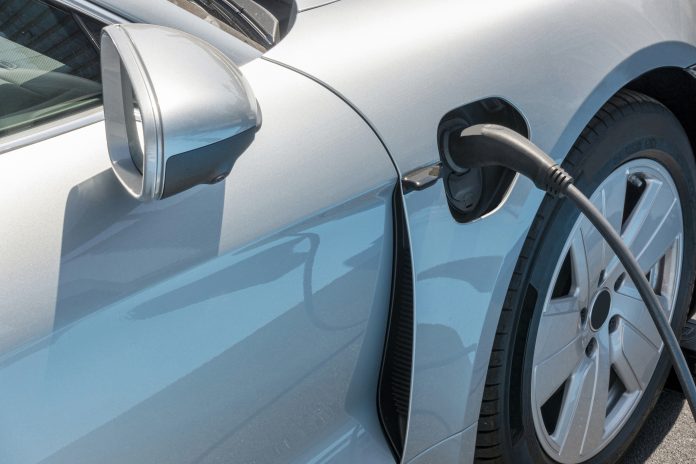The market to decarbonise transport is growing with EVs, but considerations for electric vehicle charge points must be made for performance and security
The UK now has over 42,000 electric vehicle charge points, as over 2,000 were installed in March and April. Progress in rolling out charging infrastructure is important as the UK gears up for the ban on the sale of new petrol and diesel vehicles from 2030.
At that time, it is expected 300,000 public chargers will be available. Meanwhile, there are now 1.1 million electric cars (battery and plug-in hybrid), according to the Society of Motor Manufacturers and Traders, and this is expected to rise by a further 500,000 this year.
The number of available electric vehicle charge points must catch up to demand if road transport is to be more sustainable.
Therefore, the charge point rollout must be rapid, but it must also be considered. After all, charging stations will ultimately form part of critical national infrastructure and the public and businesses will rely on them every day.
Electric vehicle charge points exchange important data
Users will demand that charge points are widespread, available, accessible and well-maintained. Operators will meet these needs, and secure operational insight into their estate through charge point connections.
Those connections exchange data that enable charging stations to be monitored for performance and maintenance and to process payments from public locations.
As electric vehicles become more commonplace, they generate a load-balancing challenge for energy service providers, meaning that operators must understand the load they place on the network.
Electric vehicle charge points must be connected and monitored so operators can gather data on when vehicles are charging
This is another reason why electric vehicle charge points must be connected and monitored so operators can gather data on when vehicles are charging to predict peak periods and schedule charging cycles. If they aren’t connected, control is limited and the risk of power fluctuations, surges and outages could go up.
Electric vehicle charge points are, therefore, a network of, essentially, internet of things (IoT), connected devices. IoT devices have a number of unique characteristics compared with other connected devices such as computers and laptops.
Notably, IoT devices are unmanned and exchange data automatically. However, they do share a fundamental characteristic with other devices – they must be protected.

Secure electric vehicle charge points are essential for public confidence
It isn’t enough to simply install thousands of charge points; operators must secure these assets and consumer data 24/7. They must defend against cyberattacks that could threaten the confidentiality of consumers’ data or the ongoing operation of the infrastructure.
They must counter any anomalies to ensure a reliable and trusted service. Anything less could damage consumer confidence and stunt EV public adoption.
Security is, therefore essential and must be given the highest priority. Operators must consider how they protect identification credentials, how they secure applications, how they ensure charge points communicate only with the correct destination points, and how they defend against ransomware, malware and all other types of cyberattack.
To achieve all this, they need ‘secure-by-design’ policies that defend, detect and react against existing and emerging cyberthreats.
Security features of cellular connectivity for electric vehicle charging
Cellular IoT connectivity is flexible, scalable and can support rapid implementations, making it ideal to connect charge points. It offers connectivity without the disruption of cabling, so companies can deploy at scale without infrastructure for communications holding them back.
As they design their IoT-connected charge point solutions, operators and device manufacturers should build security in through technology, standards and best practices.
Technology features include mechanisms for securing two-way communication, such as through secure private access point names (APNs), encrypted virtual private networks and fixed private IPs, identity and authentication techniques and automated anomaly detection.

To defend charge points means managing the potential attack surface that cybercriminals may target to prevent unauthorised access to devices, cloud infrastructure or data.
Practically, this encompasses IoT SAFE, a SIM standard to authenticate and authorise IoT devices to mobile networks, along with cloud authentication, software updates and encrypted communications.
Automated anomaly detection forms part of a suite of measures that can support operators and their solution providers in detecting untoward activity that may indicate a problem. This could include changes in target URLs or abnormal data usage.
Cyber security as a key focus in electric vehicle charging
By detecting issues, companies can take swift action to react to a threat or breach. That could be by forcing a software update or taking a device out of service until it can be remediated.
Technology and standards therefore play a significant part in the security of charge point connectivity as do best practices, and those apply just as much to people and processes as they do to devices.
Employees’ actions, behaviours and approaches contribute significantly to levels of security risk. Processes should be designed with security in mind because they, too can introduce risk. Companies should consider these factors not only for their own organisations but also those of suppliers that contribute to solutions.
Electric vehicle charge points represent critical national infrastructure that is constantly exchanging data
As electric vehicle charge points grow in number, they represent critical national infrastructure that is constantly exchanging data.
To operate smoothly and protect the consumer and corporate data they convey, charge points require resilient and highly secure two-way connectivity.
Operators and the companies they engage with must ensure security is planned from the very start and built-in at each stage of the deployment to mitigate risk as they deliver the charge point ecosystem.
This piece was written by Justin Godfrey-Cass, Head of Transport Solutions at Wireless Logic.











